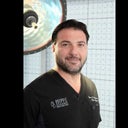Given that you are considering the definitive, or absolute, removal of your saline implants without any kind of replacement, I think you have a few more options for how to proceed. As far as the way that I reason this out, I will take one consideration off of the table right now, and that is capsulorrhaphy. In my opinion, there should be no place for this if you are actually removing your implants altogether. If you were replacing them to a smaller size, or moving them to a different position, that would be indicated, because you will need to preserve a capsule or space around a new implant, however, given that you are removing your implants altogether, there is no need to preserve a capsule, and in fact, efforts to use the capsule to somehow suspend the overlying breast tissue will likely create more problems, such as distortion of shape and natural "drape" of the breast tissues, and trying to perform capsulorrhaphy to somehow "sew the capsule closed" or obliterate the space that way is probably fruitless and an unnecessary expenditure of time on a futile effort. If anything, I would consider a capsulectomy, that is complete removal of the capsule, as this will allow the breast tissue to heal together and essentially obliterate the space, which is no longer necessary, and this will allow better contraction of the breast tissues. Capsulectomy adds a little bit more time to the procedure, but it should not be substantial, and it shouldn't make the recovery that much longer that it is prohibitive. One reason why capsulectomy, again, complete removal of the capsule, makes sense, is because leaving any of the capsule behind can sometimes lead to chronic fluid collections in the capsule which don't go away spontaneously. The capsule is sort of specialized tissue, and once it is well established it doesn't always contract down completely or resorb, and if it remains intact it can create a potential space that often fills with fluid. Not that this is a particularly dangerous situation, but it can lead to inaccuracies with breast volume down the line, the sense that there is still "something" in the breasts, and it can leave you with remote possibilities of infection of the fluid collection over time. Removing the capsule altogether along with the implants essentially eliminates these risks. Again, I do not recommend capsulorrhaphy in this setting at all.An even better option than simple removal of the implants without addressing the capsule at all would be to first deflate your implants in the office under local anesthesia with a simple needle puncture before undergoing surgery.. The skin is numbed up, and a needle is inserted directly into the implant, and the fluid is simply drawn out. It's the opposite of when we inflate tissue expanders for ladies undergoing reconstruction after mastectomy. It is virtually painless, and what this will do is take the tension off of the capsule and your skin and breast tissues and allow Mother Nature to contract the tissues down maximally before you then go and remove your implants and capsules. It will be technically much easier for the surgeon to remove them, since they will now be smaller, and your tissues will have shrunken on their own and will likely heal better, faster, and without the "floppiness" that we can see after explantation procedures. You will likely not require any lifting procedures with this approach. Again, you can still opt to leave the capsule alone and just take the implants out if you wish, but I would still suggest having that removed too for a more "complete" result. I typically wait about 6 to 8 weeks after the deflation before I remove the implants and capsules at surgery to allow the tissues to contract sufficiently. Find an experienced board certified plastic surgeon who can discuss these options with you in addition to the opinions you have already obtained. None of these choices is "bad," it's just that in my opinion, some are "better" than others in my hands. Good luck.





